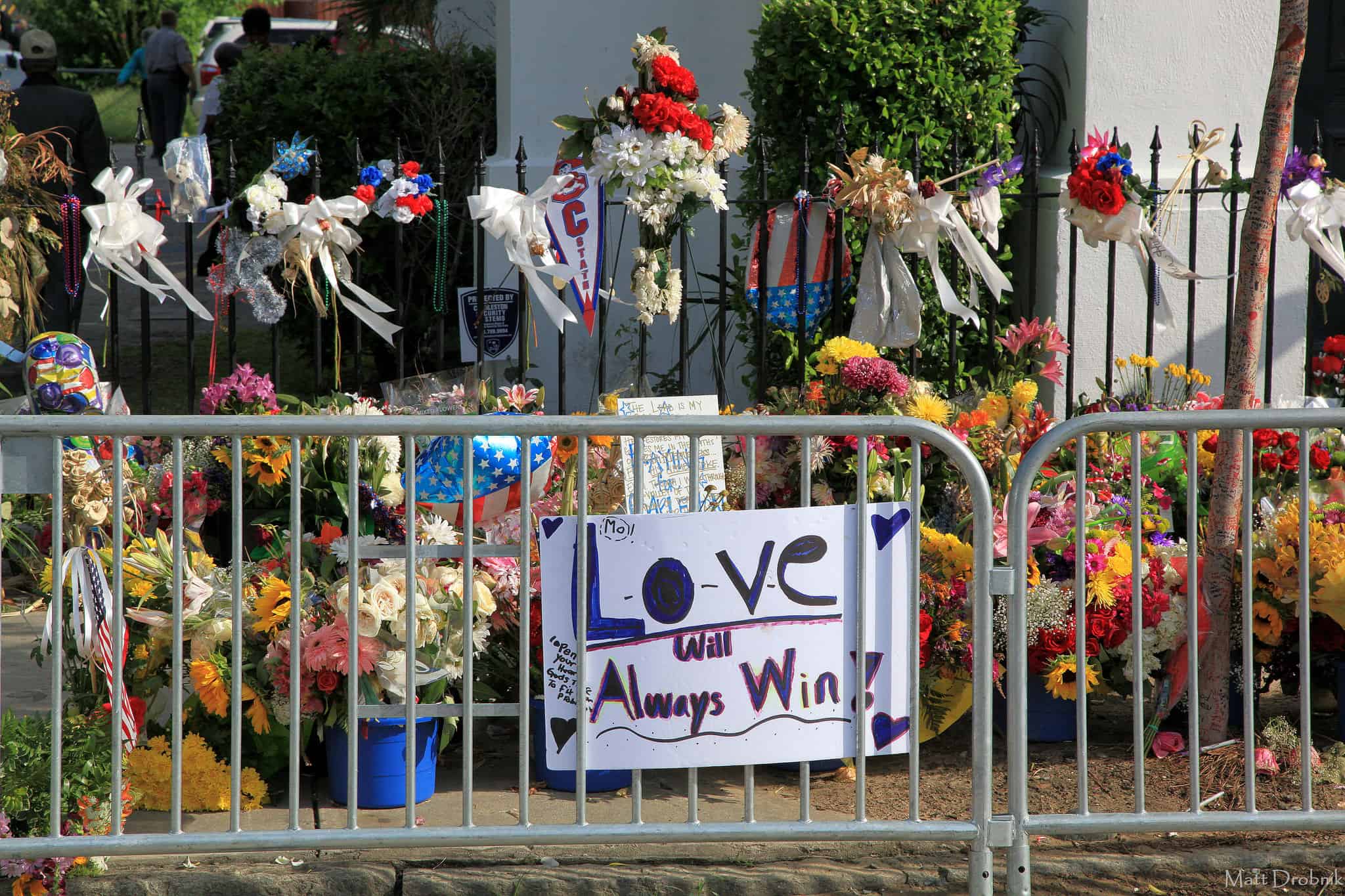On June 17, 2015, Dylann Roof entered Emanuel AME Church and sat with a bible study group for 45 minutes. As the group entered into prayer, Roof began shooting. He killed six women and three men.
Roof faced 33 charges in federal court. The jury found him guilty on each count. A second federal jury has sentenced Roof to death. He’ll be the first person to be federally condemned for a racial hate crime.
But does Dylann Roof deserve to die? Would this execution help to heal the incomprehensible heartbreak of the victims’ families and mourning parishioners? Would it be a step in the fight for racial justice? Is it the right thing to do?
* * *
A lot of Twitter thinks so. Tweets like this abound:
#DylannRoof was sentenced to death for his racially motivated crime. At least, some justice pic.twitter.com/KzdMWpQfK2
— Black To Live (@BlackToLive) January 11, 2017
Some made puns about “Da Roof is on fire.” Some celebrated that 2017 was already looking better. Memes and GIFs of dancing, dabbing, and asking for an HD livestream of the execution are currently flooding the internet.
Melvin Graham, brother of victim Cynthia Hurd, said that the death penalty was a hollow victory. He would much rather have his sister back. But, in these circumstances, Graham believes that Roof’s lack of remorse and clear hate should lead to his execution.
Others, however, decry the further violence and death. Political commentator Jamil Smith is particularly astute.
Killing Dylann Roof won’t revive the parts inside of us that already died that June day in Charleston. No state murder makes things better.
— Jamil Smith (@JamilSmith) January 10, 2017
French philosopher Albert Camus wrote, “What then is capital punishment but the most premeditated of murders.” Twitter user @Delo_taylor takes a more practical view of the consequences of executing Roof:
There’s no reason to celebrate Dylann Roof’s sentence. White supremacy has not been eradicated, in fact it just found itself a martyr.
— #J20 (@Delo_Taylor) January 10, 2017
Smith takes this thought further. Not only would Roof’s death validate white supremacists, it would also validate those who see his execution as evidence of receding racism, even though Roof’s death changes no structures:
Roof, I’d argue, wanted to be a martyr for white supremacy. But more pernicious is the fiction that his death somehow punishes racism.
— Jamil Smith (@JamilSmith) January 10, 2017
If it wasn’t already clear, it’s impossible to speak about Dylann Roof without speaking about race. It’s even tougher to speak about his execution without speaking of racism.
* * *
Still, some try by talking about Dylann Roof’s plausible mental illness. Rather than prison, the proper way to respond to Roof’s behavior is psychiatric attention. People who commit violent crimes are frequently described as crazy, insane, nuts, or screwed up in the head. This is troublesome, because it portrays people with mental health challenges as deranged, dangerous, and violent. This reasoning adds further stigma to the lives of those who already suffer from mental illness.
More than mental illness, Roof’s actions were the product of someone steeped in racism we live and breath in every day. Roof may have found a particularly virulent form of prejudice, but his actions were enabled by complacency and systematic oppression. If we blame Roof’s disordered mind and give a pass to the environment from which it developed, we excuse ourselves from our participation and acquiescence to systematic racism.
* * *
Racism even pervades the mainstream narrative of radical forgiveness response from some family members of the victims. Liliana Segura writes, “On a deeper level, there was a sense that the model of forgiveness so praised and admired by white people allowed Americans to divest themselves of the task of dealing with the roots of the hate that animated Roof’s deadly actions.” In story after story, the Emanuel AME Church was lauded for the mercy shown toward Roof. Yet by highlighting this forgiveness and minimizing its accompanying rage, this narrative fosters complacency in the fight for justice. It hides the broad, racist, structural background of this hate crime. As Emanuel churchgoer Willi Glee say, “We have to say that the country was founded as a racist, white supremacist society. And Dylann Roof is just a byproduct of that.”
The state-sponsored killing of a murderous white supremacist will not create justice. It will stall the legacy of Emanuel AME at violence, death and white supremacy. White supremacy and violence must not dictate the legacy of Emanuel AME. Rather, the legacy must be of radical mercy and concrete justice. For forgiveness and healing to work, we must admit our fault, comfort, ignorance, and role in not just the deaths at Charleston, but the many forms of violence wrought by white privilege across the United States.


